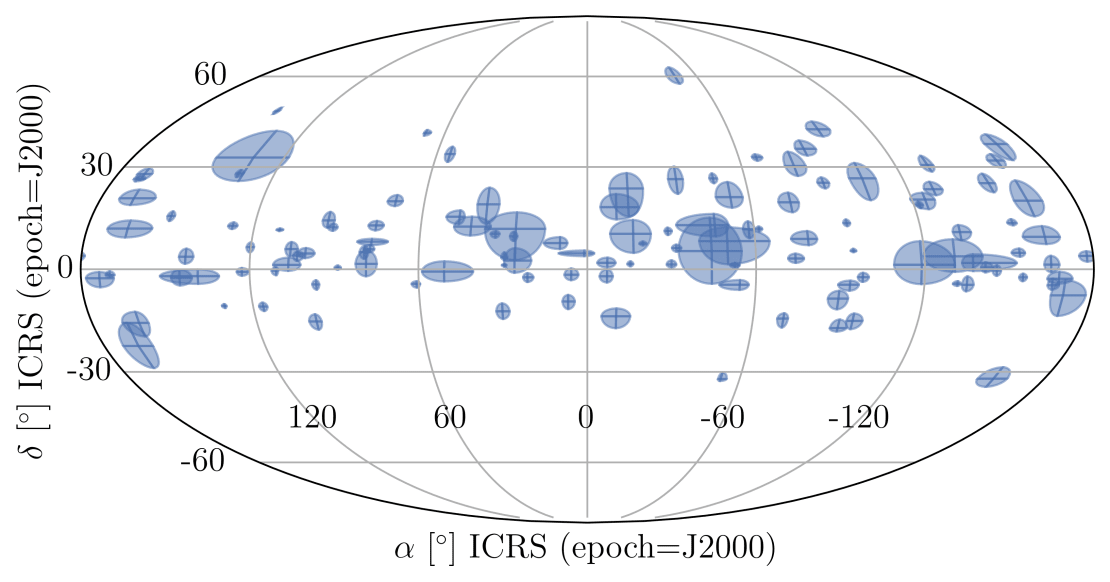A cubic-kilometer array embedded in ice, the IceCube Neutrino Observatory detects cosmic messengers called neutrinos that can travel through space uninhibited. Of particular interest are high-energy astrophysical neutrinos, which can be traced back to their sources.
IceCube issues real-time alerts to the public within minutes of the detection of a neutrino event with a high probability of being astrophysical in origin. These alerts lead to follow-up observations by a suite of ground- and space-based telescopes that can point in the direction of the neutrino in the sky and look for a probable source of the neutrino.
In 2017, IceCube detected a neutrino with extremely high energy and likely of astrophysical origin, triggering follow-up multiwavelength observations that pointed to the flaring blazar TXS 0506+056 as a potential source of astrophysical neutrinos. This breakthrough demonstrated that real-time IceCube alerts can point to neutrino source candidates, but also raises the question: can IceCube do this again?
In a paper submitted to The Astrophysical Journal today, the IceCube Collaboration presents an investigation into sources from the direction of other IceCube event alerts as well as additional high-energy neutrino events with a high probability of being astrophysical. The analysis looked at 11 years of reprocessed IceCube data to search for additional continuous and transient neutrino emission associated with 122 high-energy events. The event selection, called “alert+ events,” consisted of IceCube alert events and high-energy tracks. No significant continuous emission was found associated with the alert+ events, neither for a single source nor for all sources combined.

The analysis looked at 11 years of data that has been reprocessed with improved photomultiplier calibration, which enhances event energy and direction reconstruction. In addition, updates to the IceCube alert criteria in 2019 increased signal purity and expanded real-time alert selection. The data was also stripped of all alert+ events and was blind to external triggers, like observations from other telescopes.
Researchers looked for continuous neutrino emission from sources over the total observation period (11 years) and also for transient or time-dependent neutrino emission like that of TXS 0506+056.
“We looked into other approaches and found a machine learning algorithm called ‘expectation maximization’ that we could apply,” says Martina Karl, a postdoctoral associate at Technische Universität München and study lead. “For our search, we assume a Gaussian-shaped distribution of event detection times (for the signal and neutrino flare) and a uniformly distributed background. This is the first time we used expectation maximization on IceCube data, and it sped up our search by about a factor of 105.”
Karl and researchers were able to constrain the maximal neutrino emission from all investigated positions. When they looked for transient sources, the most significant neutrino emission came from the same direction as the blazar TXS 0506+056 reported in 2018, but this was the first confirmation using recalibrated data.
Karl notes that TXS 0506+056 is a special case since they did not observe anything similar for other alert+ events.
“What we learned is that objects emitting high-energy neutrinos are, in general, not emitting many lower energy neutrinos. It could be that we need more data because the emission is not yet strong enough to detect it or, as an example scenario, that these sources have short flares that we see as single alert events,” says Karl.
The researchers also note an alternative explanation where weak high-redshift sources, via Poisson fluctuations in an alert, can be determined without matching additional neutrinos.
Looking ahead, the planned IceCube-Gen2 extension along with more IceCube data will improve searches for neutrino sources that also emit alert-event neutrinos.
+ info “Search for Continuous and Transient Neutrino Emission Associated with IceCube’s Highest-Energy Tracks: An 11-Year Analysis,” IceCube Collaboration: R. Abbasi et al., The Astrophysical Journal 964 (2024) 1, 40, iopscience.iop.org, arXiv